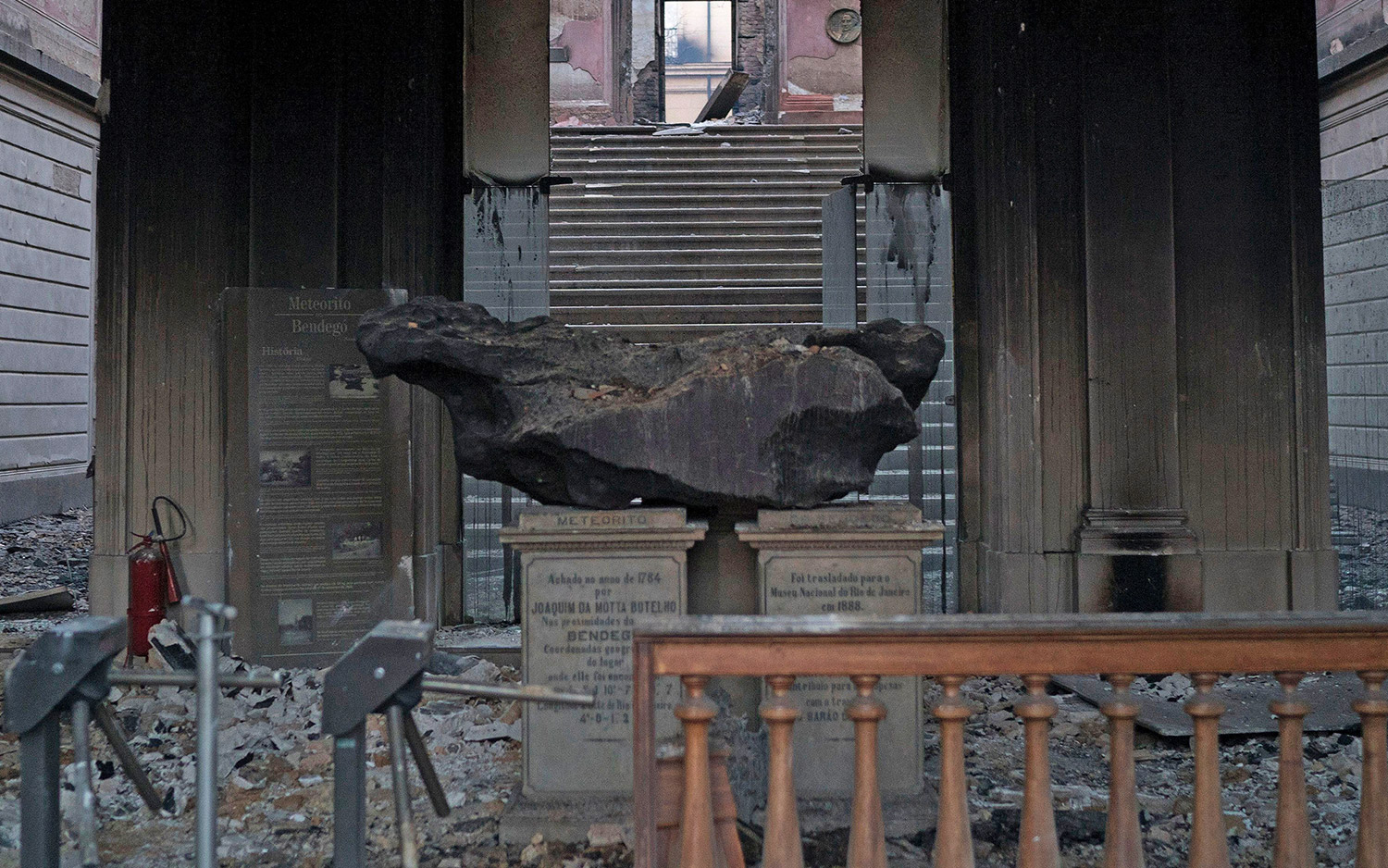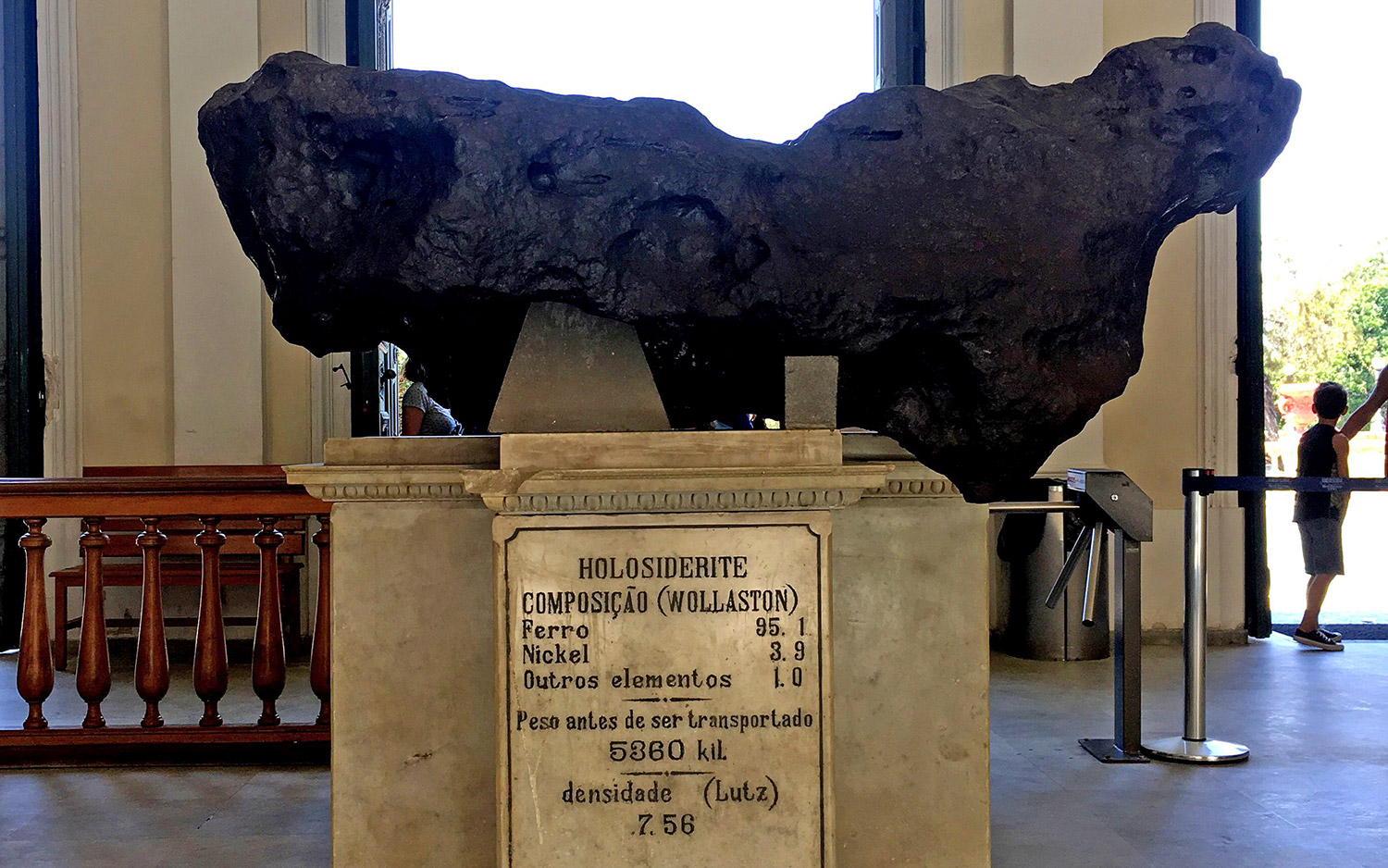Brazil's Biggest Meteorite Survives Museum-Destroying Fire

After a catastrophic fire blazed through the National Museum of Brazil on Sunday (Sept. 2), destroying many of the institution's 20 million artifacts, the museum's meteorites were some of the few relics left standing.
Among the space rocks that survived the blaze is the Bendegó meteorite, which is the largest meteorite ever found on Brazilian soil. The iron-nickel meteorite is one of about a dozen meteorites housed at the museum.
Discovered by a cattle farmer near the town of Monte Santo in the Brazilian state of Bahia in 1784, the Bendegó meteorite weighs about 11,600 lbs. (5,260 kilograms). That's more than twice as much as an average car, all packed into a space rock the size of a motorcycle. At the time of the object's discovery, it was the second-largest meteorite ever found. [What Are an Asteroid, a Meteor and a Meteorite?]

When the locals first attempted to transport the meteorite to the nation's capital using a wooden cart pulled by oxen, an accident sent the hefty space rock tumbling downhill and splashing into a stream, according to the museum's description. The rock stayed there for another century, until Brazil Emperor Pedro II had it removed and relocated to the museum, where it has been on display since 1888.
Many other priceless artifacts were in the museum during the fire, including the 11,000-year-old skull of a Paleoindian woman named "Luzia," the reconstructed skeleton of a huge dinosaur known as the Maxakalisaurus and several Egyptian mummies.

Officials have not yet been able to tally the damages, as investigators have been instructed to hold off on their work until engineers declare the building safe to enter, according to The Guardian. However, one official told The Guardian that an estimated 90 percent of the museum's artifacts have been damaged or destroyed.
In the case of the meteorites, it should come as no surprise that these space rocks seem to be resilient in the midst of a raging fire. Meteors, or fragments of asteroids that enter Earth's atmosphere, can reach temperatures of about 3,000 degrees Fahrenheit (1,650 degrees Celsius) as they plunge through Earth's atmosphere. This is hot enough to melt metals like iron and nickel found in many meteorites, but the temperatures inside a burning building don't get quite as high.
Get the Space.com Newsletter
Breaking space news, the latest updates on rocket launches, skywatching events and more!
A video shared on Twitter by the local radio station Rádio BandNews FM showed the Bendegó meteorite apparently intact atop its pedestal in the museum's entryway, along with a second, smaller meteorite in an adjacent room. These meteorites appear to be the only things left standing in a building filled with rubble and ash.
Email Hanneke Weitering at hweitering@space.com or follow her @hannekescience. Follow us @Spacedotcom, Facebook and Google+. Original article on Space.com.
Join our Space Forums to keep talking space on the latest missions, night sky and more! And if you have a news tip, correction or comment, let us know at: community@space.com.

Hanneke Weitering is a multimedia journalist in the Pacific Northwest reporting on the future of aviation at FutureFlight.aero and Aviation International News and was previously the Editor for Spaceflight and Astronomy news here at Space.com. As an editor with over 10 years of experience in science journalism she has previously written for Scholastic Classroom Magazines, MedPage Today and The Joint Institute for Computational Sciences at Oak Ridge National Laboratory. After studying physics at the University of Tennessee in her hometown of Knoxville, she earned her graduate degree in Science, Health and Environmental Reporting (SHERP) from New York University. Hanneke joined the Space.com team in 2016 as a staff writer and producer, covering topics including spaceflight and astronomy. She currently lives in Seattle, home of the Space Needle, with her cat and two snakes. In her spare time, Hanneke enjoys exploring the Rocky Mountains, basking in nature and looking for dark skies to gaze at the cosmos.









